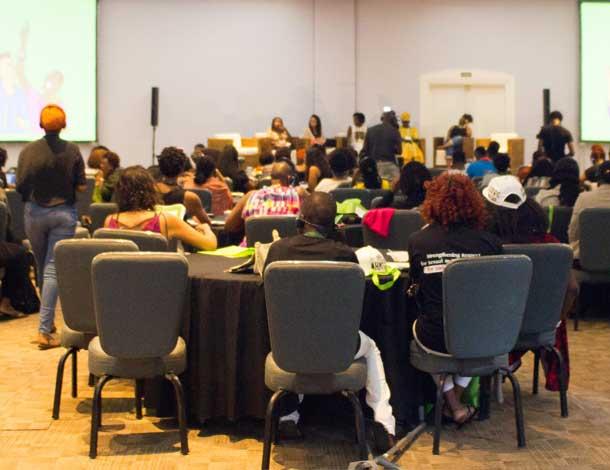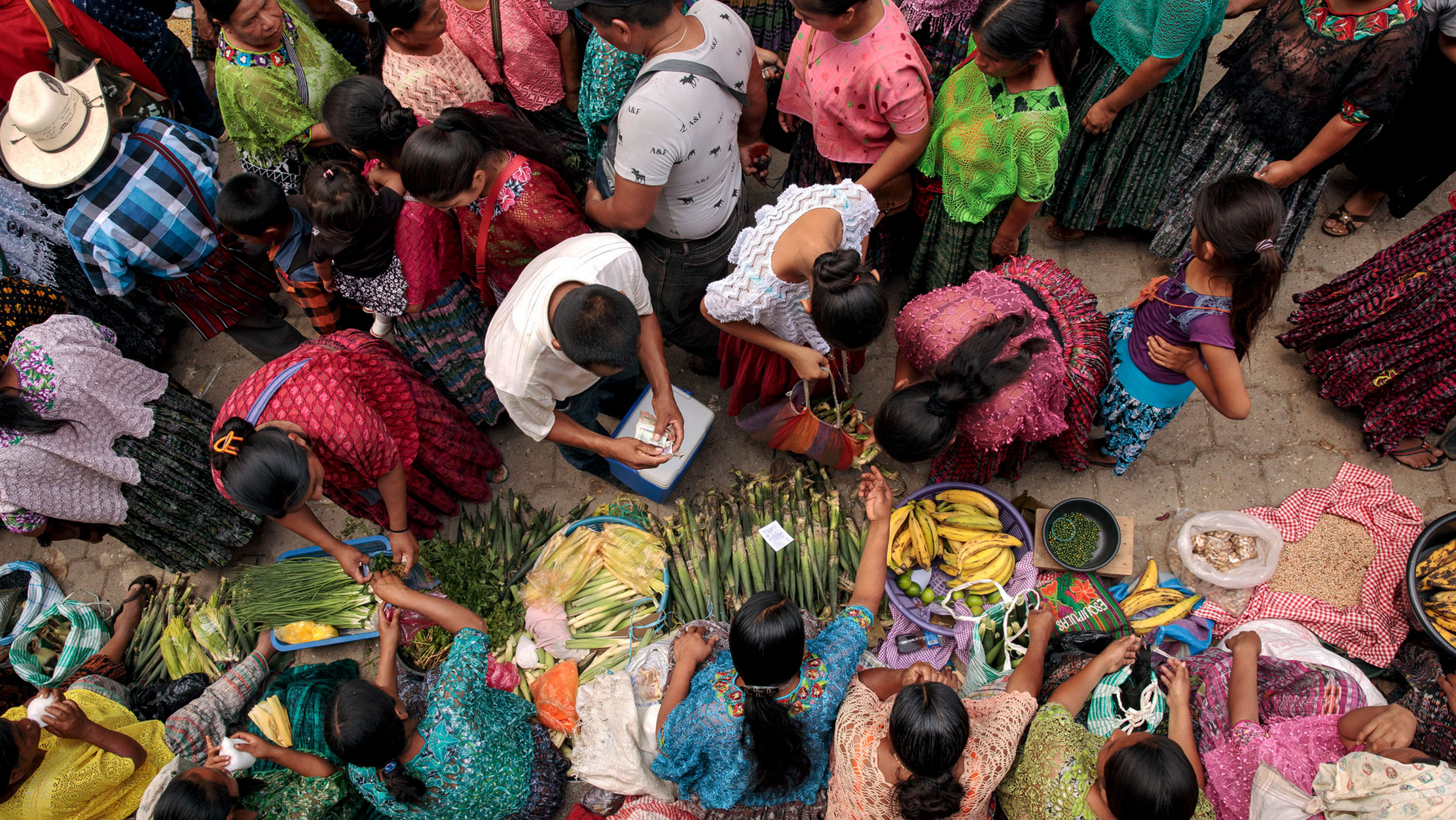I am bisexual. When I walk down the street some men think it is a compliment to say You are just my size’.
I am also African. I am a smorgasbord of identities that could possible preclude me from fitting into the mainstream of what it would mean to be a ‘good functioning human’.
The notion of what constitutes a ‘desirable body’ has historically been linked to notions of health, what is deemed a good and complete body, and in turn a body worth respecting. One need only look at the medically-backed arguments that have constructed ideas of size, race, sexuality, ability and gender to see which bodies are able to garner physical respect and recognition or even the ability to exist. For centuries we have lived in a world where ‘desirable’ body can just as quickly fall into the realms of one not worth having, a constant flux of which we, as feminists, must be cognisant.

Covering the topic is something that is becoming increasing central within activist realms as more and more notions of intersectionality and multiple identities become key. Within the work that is done the ability to have a myopic view when it comes to the struggles we take up and the work we do is no longer feasible as movements look to each other not only for support but also in terms of learning and reinforcement.
This was a theme reflected at the AWID conference in the session, “depathologisation: a struggle for all”. The panel sought to outline the different ways in which different bodies had been (and continued to be) pathologised. As Viviane Vergueiro, a panellist from the session pointed out, ‘the pathologisation represents cissexist, racist, misogynistic, western-centric, ableist gazes and norms’.
The impact of colonization on our bodies Within this space various notions of pathologisation were unpacked. Kicking off the panel Vergueiro spoke about ways in which culture and colonization had clashed in order to pathologise the non- white heterosexual male body, causing all else that fell outside these to be considered outside the norm. This notion was taken further in other presentations where matters of sexuality were were also raised, as well as how the normalisation of certain bodies (e.g. thin, heterosexual and white male bodies) has affected different realms from health-care to access to rights in general.
How ideas of what qualifies as being mentally, socially acceptable and normal have allowed for some bodies to remain vulnerable and open to modification, subjugation or simply being sidelined. Presenters outlined how those who were intersex, larger in size, queer and female have found themselves on the outskirts of conversations and general understanding leaving them vulnerable to institutionalised abuse.
The conversation highlighted the ways in which the notion of a body norm sneaks subtly into cognitive frameworks allowing for historically problematic ideas to take root and form key parts of policy and other important frameworks. Unpacking the different ways in which pathologisation played out allowed for those present to see how it can manifest in ways that we would not have been aware of.
Marginalizing Blackness
One thing that did strike me was the distinct lack of voices of colour within the room.
And yet one of the key bodies that has faced incessant pathologisation has been the black, and most specifically African, body. As an African feminist, knowing the history that our bodies went and continued to go through. As an African woman, why was it seemingly still on the outskirts of this conversation. This question caused me to wonder about more contemporary examples that related to my experience of the world.
Pathologies within different realms When one looks at how the pathologising of certain bodies continues into the public sphere one need look no further than the recent Rio 2016 games. Outside of pomp and glamour the tone of what a woman’s body should and should not be was so deeply entrenched within the prestigious games that it won a gold all of its own. On the one hand we had the women’s beach volleyball, the epitome of what an athletic woman should be - tall, mostly blond, tanned and white with zero percent body fat but just enough ‘pooch in the tooch’ to make those bikini bottoms make you want to do squats.
On the other hand titans like Caster Semenya, Francine Niyonsaba and Margaret Wambui have drawn comments on social media such as ‘this could be the African Men’s 800 meter podium’ after they blew their competitors out of the water. Trends such as #HandsOffCaster had to emerge to counter the backlash that came from spaces such as Sports Illustrated, reinforced by athletic rivals such as Lynsey Sharp, who attempted to invalidate Semenya’s victory by calling into question her and her competitors ‘womanhood’. The debate raged as to whether the winners of the 800m race could be termed ‘women’ and thus eligible to compete, with lay pathological evidence being presented as an argument to disqualify these women’s bodies. It’s worth remembering in this context that the pathologisiation of the African female body has a history as far back as the kidnapping, sexualisation and mutilation of Saartjie Baartman, exemplifying the mistreatment and sexual abuse of the African female form as something to be studied, used or disposed of.
Pathologizing reproduction

This exploration of the female body being some sort of anomaly is not just relegated to women of colour. Despite the menstrual cycle and childbirth being something that has been present within human history since the first human popped out the female reproductive system and all that comes with it is still treated as a physiological mystery and anomaly. Female reproduction is tied into ideas of ‘lack of productivity’, and even mental health.
Despite the process of human reproduction having been around within women as long as it has within men misunderstanding of what happens when a woman has her period (see: ideas of a hysterical womb) when a woman orgasms and even when she carried a child being the subject of large debates and mass misunderstanding. Douching and feminine hygiene are a multi- billion-dollar industry, and our menstrual cycles are societally vilified as well as allegedly linked to our levels of sanity (at some points in history Pre-Menstrual Syndrome (PMS) was even classified as a mental disorder).
This has greatly affected not only the sociological understanding of the female body, leading to spreading of myths and vilification, but also the ability for adequate health care and policy support both within the private and public realm for women, be it maternity leave, access to non-expensive hygiene products in the way condoms are readily available or even medical innovation within the realms of women’s health care.
Pathologizing trans and intersex bodies Finally, one sees the profound implications of the pathologisation of the trans and intersex body, which challenges gender binaries and western concepts of what the body should look like and function like in terms of gender identity and sexuality. Intersex bodies have seen a torrent of abuse in order to ‘fix them’. From birth, intersex bodies have faced human rights violations, including mutilation, in order to make them conform to prevailing sex norms. Equating transness to a psychological impediment has also created barriers to health care. Access to hormones and other surgical and medical support are greatly limited by a lack of d understanding of how being transgender manifests within bodies.
This is compounded by lingering ideas of homosexuality as an ‘illness’ - not only confined to the African context, being linked to the realms of witchcraft and going against culture and identity, but present also within ‘gay cure camps’ in western countries such as the United States. The notion that there is a ‘normal’ sexuality, one that a person, with the right help can ‘return to’ being continuously perpetuated gives license to treat people a certain way, one that you would not treat a ‘normal person’.
As was outlined within the panel the lack of understanding of body diversities does manifest in the violation of human rights. The ability to erase people’s identities and experiences with a medical stamp, separating them from the norm, not only adds gravitas to discrimination but also places a number of people directly within harm’s way.
The need to include depathologisation within our various feminisms
The thought that our respective feminist lenses may not need to engage with depathologisation limits the work we can do. Very few of us are the quintessential chiselled, strong-jawed, white man who also climbs mountains during the weekend whilst running a Fortune 500 company. We can just as quickly find ourselves outside of the ‘desirable body conversation’. As a white, physically able, heterosexual, or slim and athletic person, one may not feel the relevance of the depathologisation conversation, however the intersecting nature of our identities and the identities of those with whom we work can very quickly take us from outside the conversation to the dead centre.
Those who work within the realms of sexuality and gender, body and sex positivity, minority rights, the rights of those with disabilities and a whole host of other spaces have clearly identified a need to challenge the ‘scientific’ ideas of what lives matter and what lives should be allowed into the mainstream. In order to build a world that is less verbally, cognitively and physically violent against people who are not ‘mainstream’ even we, within the realm of activism, need to unlearn and challenge these pathologies. We need to challenge what a functioning woman is like, what a sexual body should act like, what gender looks like, what able looks like or what healthy looks like. We need to challenge what is a normal body and what is accepted as a desirable body.
It is the language of ‘normal’ that has allowed for exclusion and violence and engaging with intersectionality requires speaking out against this. Not only does the unlearning need to be part of our activism but, as different types of feminists, part of our lives and understandings as well.
Sitting in that AWID Forum space, coupled with continued research on the low key effects of pathologisation caused me to call into question not only my feminism but my place in the world. I cannot continue to ignore the tools that help me understand normalisation and my place in the world. These facets of my identity impact my and others’ ability to manoeuvre. This understanding needs to inform not how we see the world, but how we define our work within it.
About the author
Tiffany Kagure Mugo is an Open Society Foundation Youth Fellow and co-founder and curator of HOLAA! an online Pan Africanist hub that advocates for and tackles issues surrounding African female sexuality. HOLAA! seeks to allow women the space to speak on their sex and sexuality (whatever it may be) whilst also equipping them with the tools to manoeuvre the online space. She is a contributor to the Mail and Guardian, Okay Africa Thought Leader and This Is Africa amongst other platforms writing articles on the two human conditions: sex and politics.
She is a digital and social media consultant and has also written a short story or three which have been published in various anthologies including the Adults Only and Incredible Journey Short Sharp Story Anthology. She enjoys being a polymath for no pay as she ponders the existential crisis the world is going through.
